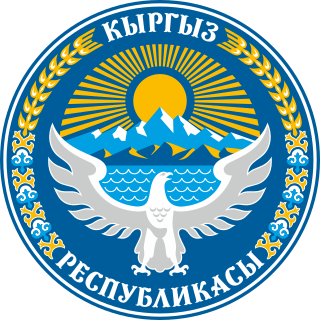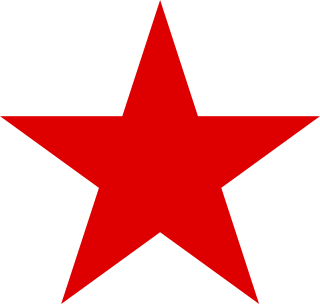 W
WThe national symbols of Kyrgyzstan are defined by Article 6 of the Constitution of Kyrgyzstan. They consist of the Flag, the Emblem, and the National Anthem.
 W
WThe State Anthem of the Kirghiz SSR was the national anthem of the Kirghiz Soviet Socialist Republic. The music was composed by Vladimir Vlasov, Abdylas Maldybaev and Vladimir Fere, and the lyrics were written by Kubanychbek Malikov, Tulgebay Sydykbekov, Mukanbet Toktobaev, and Aaly Tokombaev.
 W
WThe emblem of Kyrgyzstan was adopted on 2016. The emblem has a circular form which mostly bears the color blue. Light blue is known as the Kyrgyz color of courage and generosity. To the left and right of the coat of arms, wheat and cotton are displayed. In the upper part, the name of the country appears in Kyrgyz "Кыргыз Республикасы". It was designed by A. Abdraev and S. Dubanaev.
 W
WThe coat of arms of the Kirghiz Soviet Socialist Republic was adopted on March 23, 1937, by the government of the Kirghiz Soviet Socialist Republic. The coat of arms is based on the coat of arms of the Soviet Union. It shows symbols of agriculture on a backdrop of the Ala-Too mountain ranges, surrounded by a frame of folk art of the Kyrgyz people. The red star was added in 1948. The rising sun stands for the future of the Kyrgyz nation, the star as well as the hammer and sickle for the victory of communism and the "worldwide socialist community of states".
 W
WThe Epic of Manas is a traditional epic poem dating to the 18th century but claimed by the Kyrgyz people to be much older. The plot of Manas revolves around a series of events that coincide with the history of the region in the 9th century, primarily the interaction of the Kyrgyz people with Turkic and Chinese people.
 W
WThe flag of Kyrgyz Republic consists of a red field charged with a yellow sun that contains a depiction of a tunduk, the opening in the center of the roof of a yurt. It is actually a depiction of the first thing one sees when waking up in a yurt, namely the construction of the pinnacle of every Kyrgyz yurt with three crisscrossing laths across the circular opening at the top of the yurt. Adopted in 1992, just over seven months after the country's independence was declared, to replace the flag of the Kirghiz Soviet Socialist Republic (SSR), it has been the flag of the Kyrgyz Republic since that year. The red on the flag is said to be inspired by the pennant lifted by Manas, the country's folk hero.
 W
WThe hammer and sickle is a symbol meant to represent proletarian solidarity – a union between the peasantry and the working class. It was first adopted during the Russian Revolution, the hammer representing workers and the sickle representing the farmers.
 W
WThe flag of the Kirghiz SSR was adopted by the Presidium of the Supreme Council of the Kirghiz SSR decreed by its Decree on December 22, 1952. The 1978 constitution of the Kirghiz SSR states that the ratio of the flag is 1:2 with the blue/white/blue stripes in the middle taking 1⁄3 of the flag height and the white stripes 1⁄20 of flag height. The red, blue and white colors were derived from the Pan-Slavic colors.
 W
WThe National Anthem of the Kyrgyz Republic is the title of the current national anthem of Kyrgyzstan, adopted on 18 December 1992 by a resolution of the Supreme Council of Kyrgyzstan. The music was composed by Nasyr Davlesov and Kalyy Moldobasanov, and the words were written by Jamil Sadykov and Eshmambet Kuluyev.
 W
WA red star, five-pointed and filled, is a symbol that has often historically been associated with communist ideology, particularly in combination with the hammer and sickle, but is also used as a purely socialist symbol in the 21st century. It has been widely used in flags, state emblems, monuments, ornaments, and logos.